22.02.2025
Intuitive Machines IM-2 Mission Lunar Lander Encapsulated and Scheduled for Launch
HOUSTON, Intuitive Machines, Inc. (Nasdaq: LUNR, LUNRW) (“Intuitive Machines”) (“Company”), a leading space exploration, infrastructure, and services company, announced its IM-2 mission Nova-C class lunar lander, Athena, completed all integration milestones and is safely encapsulated within SpaceX’s payload fairing in preparation for launch.
In coordination with SpaceX, launch of the Company’s IM-2 mission is targeted for a multi-day launch window that opens no earlier than February 26 from Launch Complex 39A at NASA’s Kennedy Space Center in Florida.
“Humanity has never witnessed three lunar landers enroute to the Moon at the same time, and Athena is ready to rise to the occasion,” said Intuitive Machines CEO Steve Altemus. “This profound opportunity to make history isn’t solely built on technology – it’s established through the relentless dedication of our people, who have turned the Company’s words about a reliable cadence of lunar missions into action.”
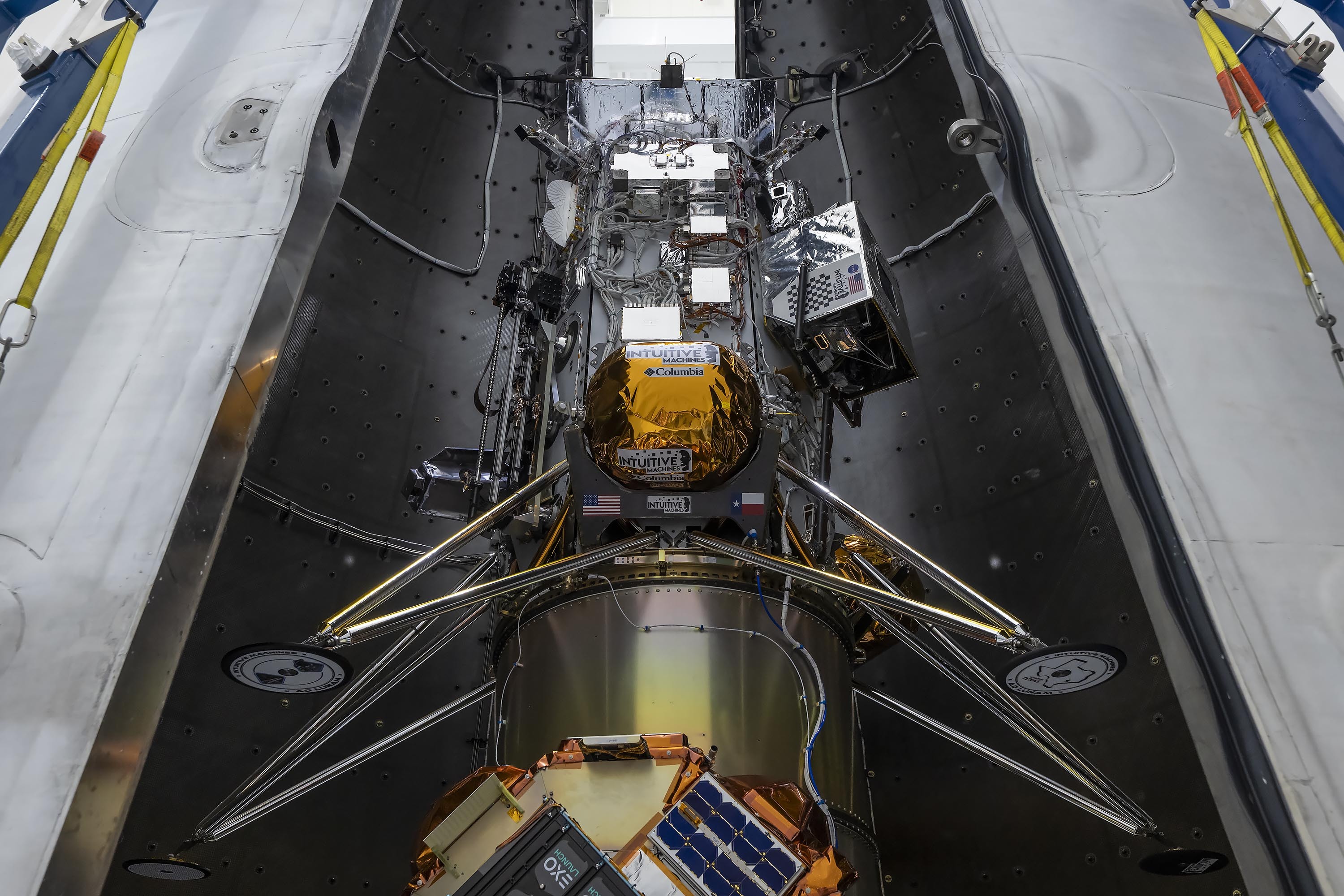
The Intuitive Machines IM-2 mission is the Company’s second as part of NASA’s Commercial Lunar Payload Services (“CLPS”) initiative, a key part of NASA’s Artemis lunar exploration efforts. The science and technology payloads sent to the Moon’s surface as part of CLPS intend to lay the foundation for future human missions and a long-term human presence on the lunar surface.
Intuitive Machines will provide IM-2 mission updates on the Company’s website and X account.
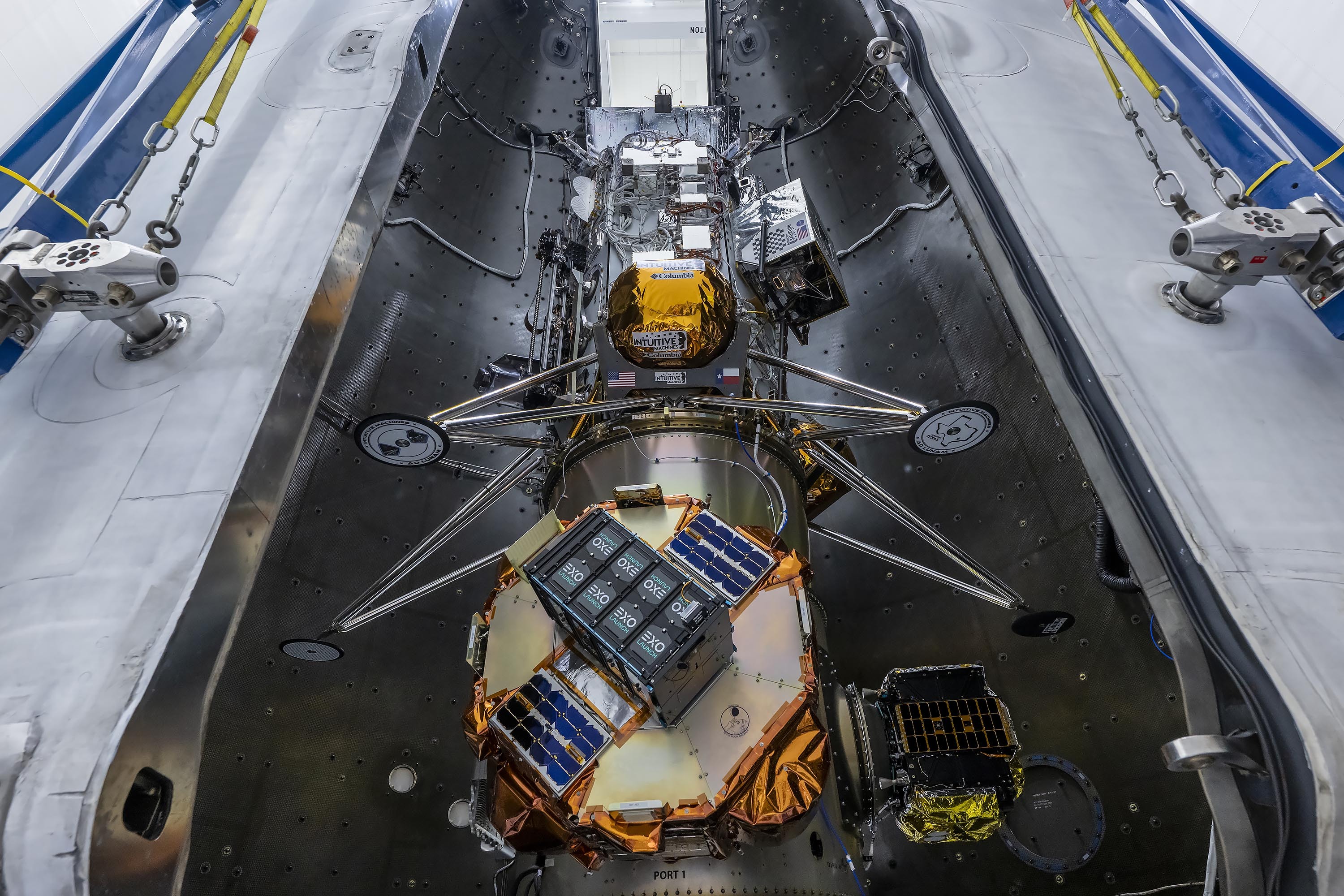
About Intuitive Machines
Intuitive Machines is a diversified space exploration, infrastructure, and services company focused on fundamentally disrupting lunar access economics. In 2024, Intuitive Machines successfully landed the Company’s Nova-C class lunar lander, Odysseus, on the Moon, returning the United States to the lunar surface for the first time since 1972. The Company’s products and services are offered through its four in-space business units: Lunar Access Services, Orbital Services, Lunar Data Services, and Space Products and Infrastructure. For more information, please visit intuitivemachines.com.
Forward-Looking Statements
This press release includes “forward-looking statements” within the meaning of the Private Securities Litigation Reform Act of 1995, as amended. These statements that do not relate to matters of historical fact should be considered forward looking. These forward-looking statements generally are identified by words such as “anticipate,” “believe,” “continue,” “could,” “estimate,” “expect,” “intend,” “may,” “might,” “plan,” “possible,” “potential,” “predict,” “project,” “should,” “strive,” “would,” “strategy,” “outlook,” the negative of these words or other similar expressions, but the absence of these words does not mean that a statement is not forward-looking. These forward-looking statements include but are not limited to statements regarding: our expectations, results and plans relating to our second mission to the Moon, including the expected timing and success of launch and landing for our second lunar mission and our progress and preparation thereof. These forward-looking statements reflect the Company’s predictions, projections, or expectations based upon currently available information and data. Our actual results, performance or achievements may differ materially from those expressed or implied by the forward-looking statements, and you are cautioned not to place undue reliance on these forward-looking statements. The following important factors and uncertainties, among others, could cause actual outcomes or results to differ materially from those indicated by the forward-looking statements in this press release: any delayed launches, launch failures, failure of our satellites or lunar landers to reach their planned orbital locations, risks associated with commercial spaceflight, including any accident on launch or during the journey into space; risks associated with the handling, production and disposition of potentially explosive and ignitable energetic materials and other dangerous chemicals in our operations; failure of our products to operate in the expected manner or defects in our sub-systems; failure to comply with various laws and regulations relating to various aspects of our business; and other public filings and press releases other factors detailed under the section titled Part I, Item 2, Management’s Discussion and Analysis of Financial Condition and Results of Operations and the section titled Part II. Item 1A. “Risk Factors” in our most recently filed Quarterly Report on Form 10-Q our Current Reports on Form 8-K, and in our subsequent filings with the SEC, which are accessible on the SEC's website at www.sec.gov.
These forward-looking statements are based on information available as of the date of this press release and current expectations, forecasts, and assumptions, and involve a number of judgments, risks, and uncertainties. Accordingly, forward-looking statements should not be relied upon as representing our views as of any subsequent date, and we do not undertake any obligation to update forward-looking statements to reflect events or circumstances after the date they were made, whether as a result of new information, future events, or otherwise, except as may be required under applicable securities laws.
Quelle: Intuitive Machines
----
Update: 27.02.2025
.
Water on the moon? IM-2 mission set to launch atop SpaceX rocket from KSC, headed to moon
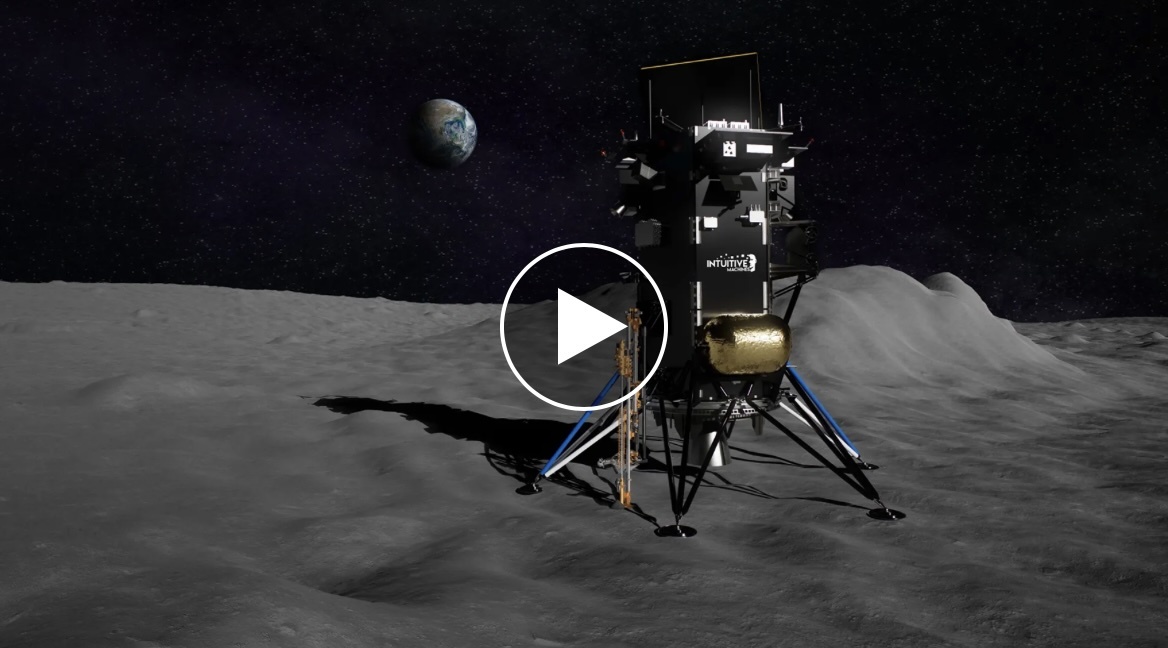
- Intuitive Machines' IM-2 mission will launch no earlier than February 26th, aiming to land on the Moon's south pole around March 6th.
- The mission will focus on exploring the lunar south pole for resources like water ice, potentially supporting future human presence.
- IM-2 follows the successful IM-1 mission, which landed on the moon but tipped over. IM-2 seeks to discover water on the moon's south pole.
The second American spacecraft headed toward a moon landing in as many months is set to launch as soon as Wednesday from Kennedy Space Center.
Destination: the moon's still unexplored south pole where scientists hope the lander might uncover resources for future explorers.
This is the follow-up mission to the Intuitive Machines-1 (IM-1) lunar lander, Odysseus, in February 2024 which became the first American spacecraft to land on the moon since Apollo 17, but tipped over after landing. Known as Athena, this Intuitive Machines Nova-C lander is poised to launch to the moon no earlier than 7:02 p.m. Wednesday from Kennedy Space Center Pad 39A. The lander will launch atop a SpaceX Falcon 9 rocket.
If all goes well, Intuitive Machines 2 (IM-2) would land on the moon around March 6 in area known as Mons Mouton. On its way to the moon, it will also observe a solar eclipse.
It's following behind Firefly's Blue Ghost lander, which launched this past January, and is currently set to land on the moon on March 2.
There is still much that remains unknown about the moon, especially when it comes to the south pole. This is where NASA plans to land astronauts during the Artemis III mission no earlier than 2027, should that remain the plan with the new administration.
What is the goal of Intuitive Machines IM-2?
"NASA leads the world in space exploration, and of course, for us American companies play a key role in our establishment of humanity's lunar outpost − and then next frontier, Mars," said Nicky Fox, associate administrator with NASA Science Mission Directorate during a prelaunch press briefing.
Onboard this lander are multiple science and technology experiments. Most of that science is aimed at discovering hidden water on the moon's south pole.
According to NASA, these experiments will play a key role in the return of astronauts to the moon, and eventually Mars. While unclear what this will look like, just last week the Department of Government Efficiency's Elon Musk called for NASA to focus its attention towards Mars. However, NASA and many in the science community view the moon as a launching point in sending humanity to Mars − and IM-2 just may prove this to be true.
Not visited by humans, or many landers, the lunar south pole is waiting to be explored. IM-2 will be the closest landing to date, at 50% closer than IM-1. That area of the moon is very cold and contains volatiles, or materials which can quickly change from liquid to solid to gas. It is believed within the moon's regolith − or surface material − remains trapped water ice as well as early particles from the moon formation.
The main experiment onboard is NASA's PRIME-1 (Polar Resources Ice Mining Experiment-1) drill. It will use the drill and mass spectrometer to search for those volatiles suspected to be in lunar regolith.
This should not only help to understand the origins of solar system, but how to utilize in-situ resources. In-situ refers to utilizing material on other celestial bodies to support human life. One example is harvesting elements for drinking water and breathable oxygen.
What is on the Intuitive Machines IM-2 spacecraft?
From science to communication to technology, the Athena lander will be carrying NASA science experiments and technology demonstrations to the moon.
On top of the PRIME-1 experiment is NASA's JPL (Jet Propulsion Laboratory) Lunar Trailblazer, which will observe and map the distribution of water on the moon.
Intuitive Machine's lander is also including a deployable hopper. This hopper, which is named Grace, is just as it sounds − it has a propulsion system which will allow it to easily and quickly navigate around the moon's tricky surface. It will allow access to areas of the moon otherwise unreachable.
At one point during the mission, the Grace hopper will hop in a permanently shadowed crater to look for lunar water.
Intuitive Machines is also working with Nokia to do the first demonstration of wireless 4G LTE technology on the moon. The same signal used in cell phones on Earth, it will be tested to help extend the reach of science instruments beyond just the site around the lander. The experiment will test a signal between the IM-2 Athena lander, a outpost rover, and the Grace hopper.
There is also a rover named Yaoki from private Japanese space company, Dymon. According to Dymon's website, it promises to be the world's "smallest lunar rover."
LoneStar is also working to provide a data system for the moon. Flextenital is also working alongside LoneStar to provide backup to the data collected.
Intuitive Machines will continue partnering with Columbia sportswear. This will be the second time a Columbia thermal blanket will have been flown to the moon. The first being on IM-1 last year.
The payloads headed to the moon are not the only objects launching aboard that Falcon 9 rocket. Intuitive Machine offered ride shares on the launch, partnering with other private companies who wished to launch their payloads. A mission to an asteroid by company AstroForge, as well as Epic Aerospace's Chimera, which includes 16 satellites bound for orbit, are also riding along. They will go on their separate ways once the Falcon 9 rocket gets the payloads to space.
IM-2 is part of NASA's CLPS program
Like Firefly's Blue Ghost, IM-2 is part of NASA's Commercial Lunar Payload Services (CLPS).
"CLPS is a one-stop, all inclusive, delivery service to the moon, where NASA is just one of many customers for that journey," said Fox.
It will be the fourth CLPS mission to fly. The first was in January 2024, when Astrobotic's ill-fated Peregrine Mission One experienced a fuel leak after launch and fell back to Earth. The second, Intuitive Machines 1, successfully soft-landed on the moon, but tipped over shortly afterward. The third, Firefly's Blue Ghost lander, launched this past January.
Most people remember the first Intuitive Machines mission and Odysseus lander, which landed OK but then tipped over.
“Even though they tripped over a rock, we still got all of NASA’s science from our six instruments on there," said former NASA Administrator Bill Nelson during a December briefing. "By the way, there’s another testimony to NASA. We got that because it trips over a rock, and its antenna’s down in the dirt. But we could use – not their communication system – we could go on NASA’s ‘big dishes’ deep-space system that had the energy to get those transmissions that were weaker because the antenna was down in the lunar dust. And the mission ended up being successful. That technology (was) to see if private companies can, in fact, become scouts for us on the moon. Same thing with what we have seen with the (SpaceX) Falcon 9 and the Dragon: an enormous success."
IM-2 is the follow up mission, and teams are confident they have solved the tipping problem.
Justin Kugler, director of business development at Intuitive Machines, spoke on the incident during an Orlando SpaceCom panel in late January.
"We completed our IM-1 mission in February of last year. I like to call that our barnstorming flight," said Kugler. "We launched on a SpaceX rocket, blasted our way to the moon, and less than a week with our locksmithing and propulsion system − the first time something like that had ever been done in a deep space environment − and then successfully soft landed on the moon just a few days later, completing all of our science and technology development objectives for NASA in the process."
In total, NASA had granted Intuitive Machines three more mission contracts. Now up to bat, is Intuitive Machines IM-2.
Quelle: Florida Today
----
Update: 27.02.2025
.
On Wednesday, February 26 at 7:16 p.m. ET, Falcon 9 launched the Intuitive Machines IM-2 mission to a lunar transfer orbit from Launch Complex 39A (LC-39A) at Kennedy Space Center in Florida. Also on board this mission was NASA’S Lunar Trailblazer, Astroforge’s Odin, and Epic Aerospace’s CHIMERA GEO 1 spacecraft.
This was the ninth flight of the first stage booster supporting this mission, which previously launched Crew-8, Polaris Dawn, CRS-31, Astranis: From One to Many, and four Starlink missions.

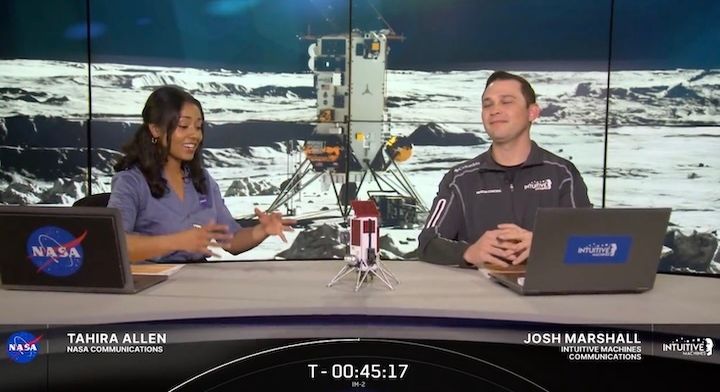
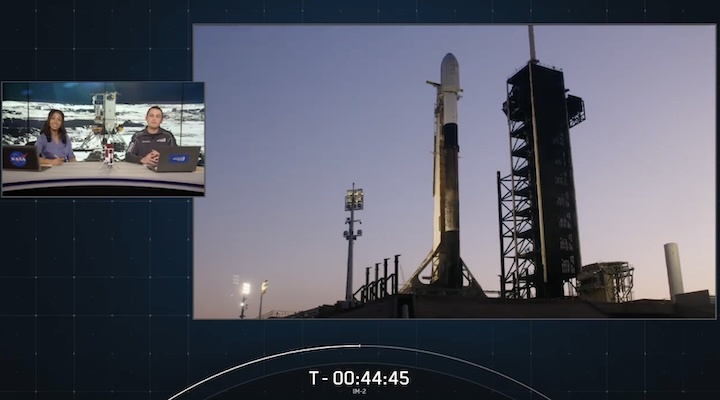
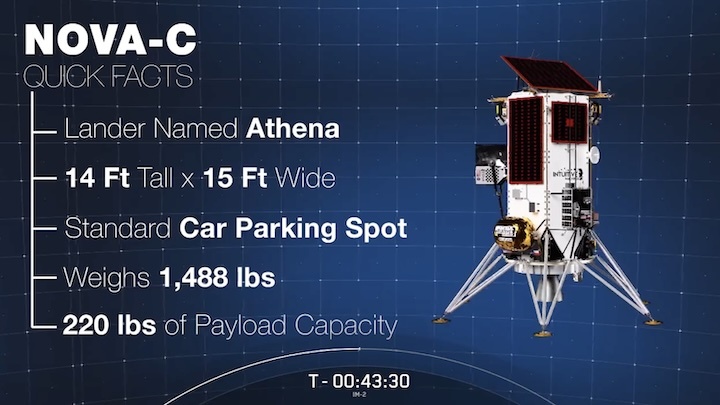
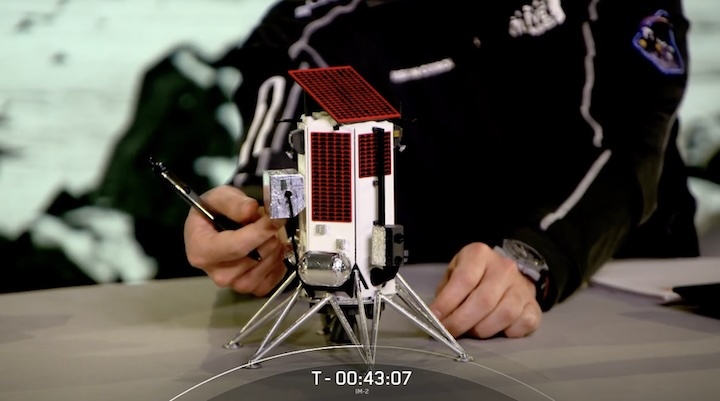
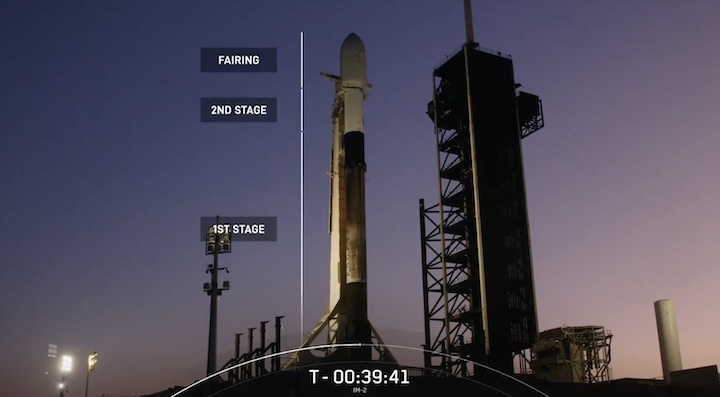
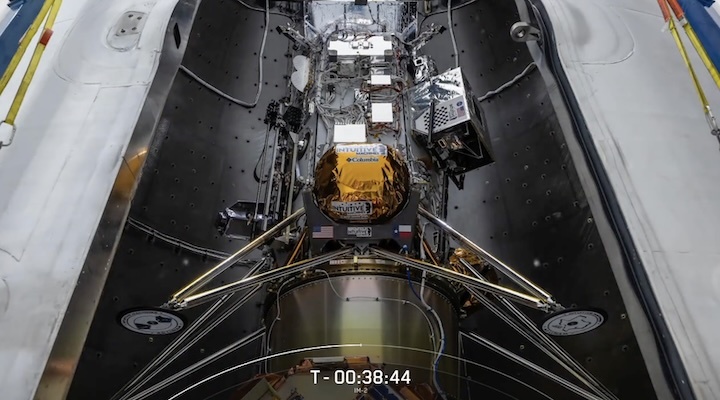
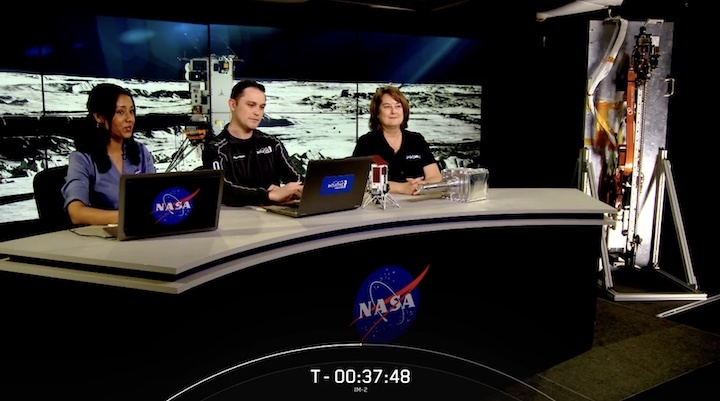
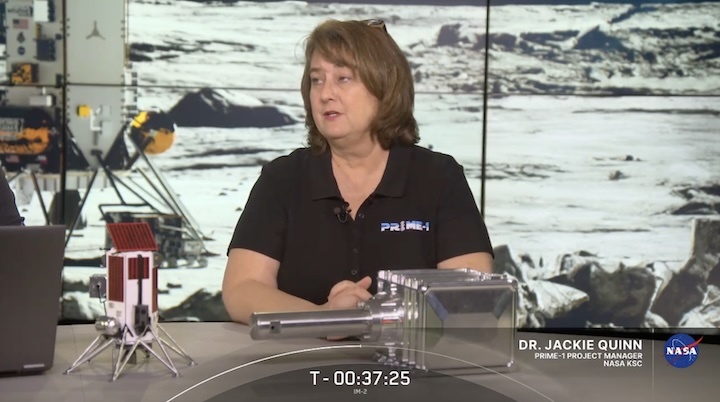
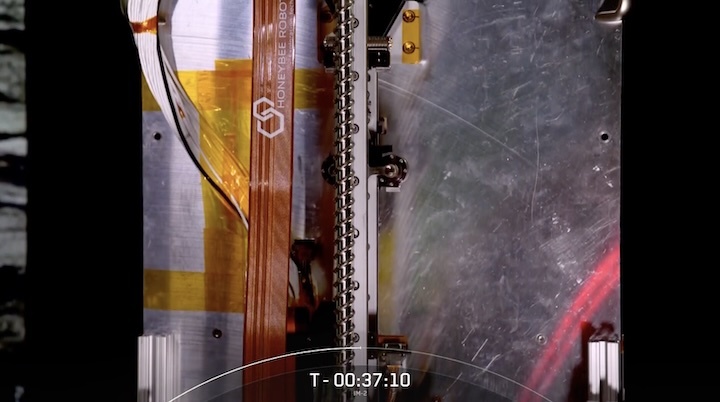
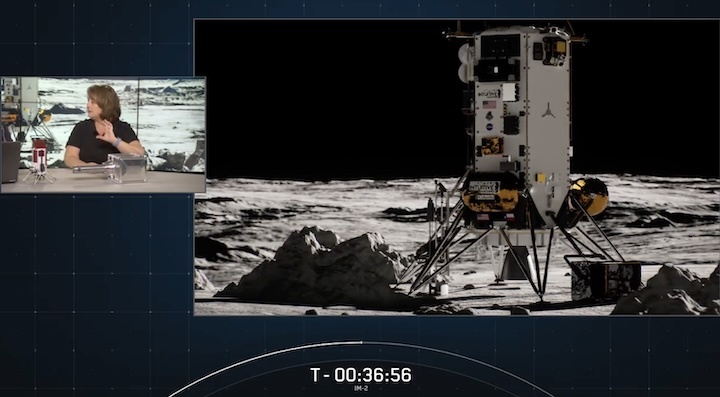
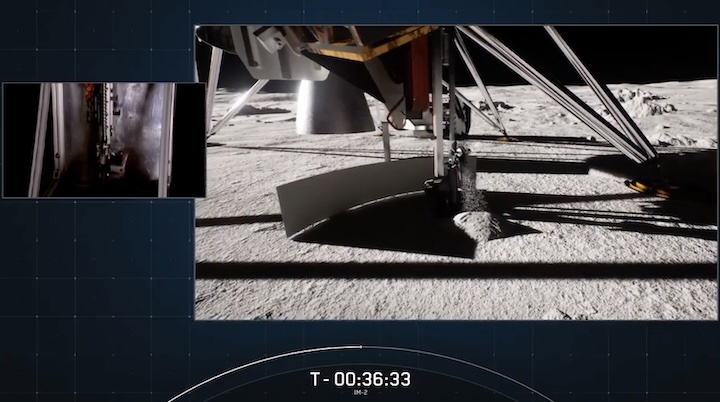
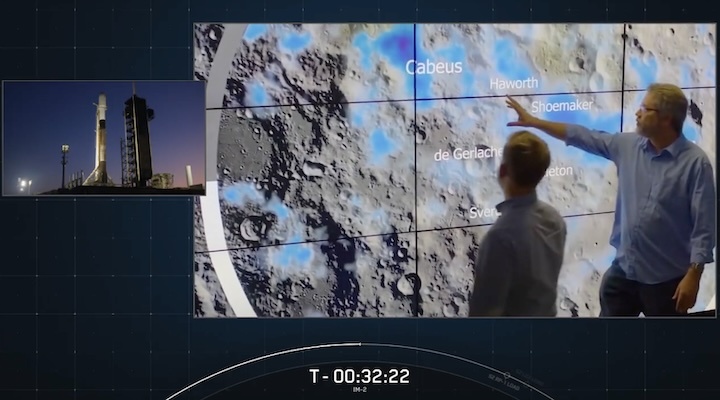
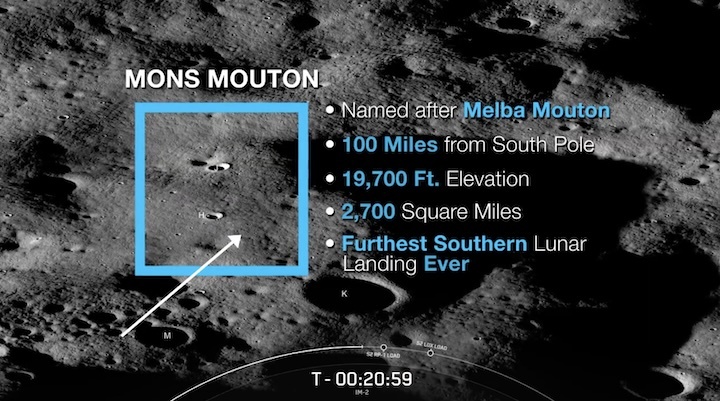
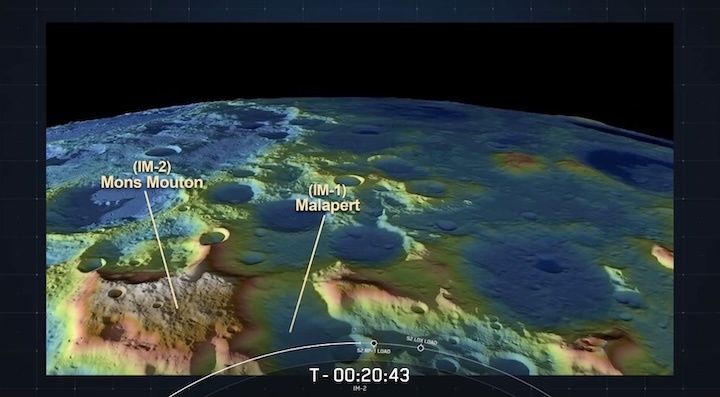
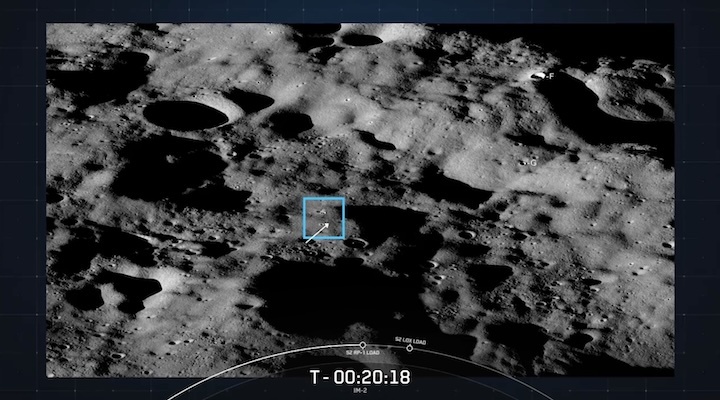
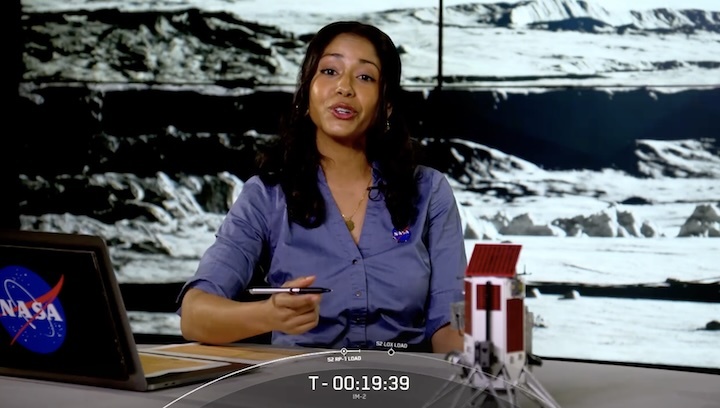
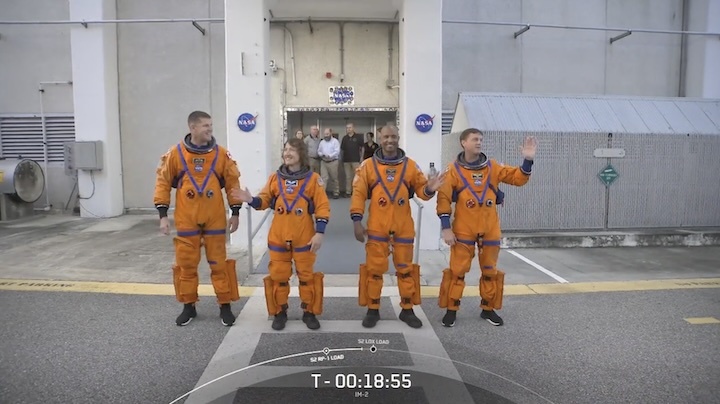
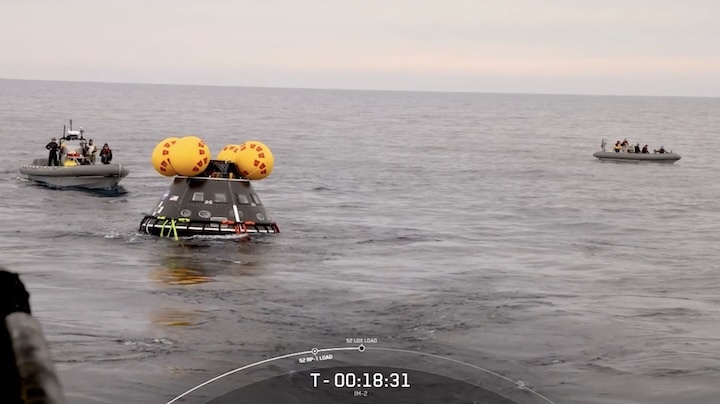
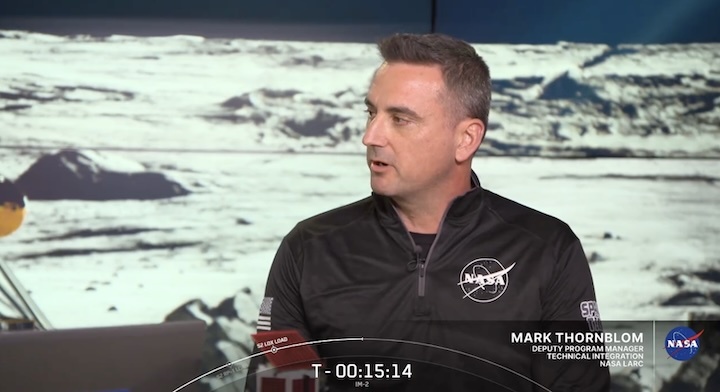
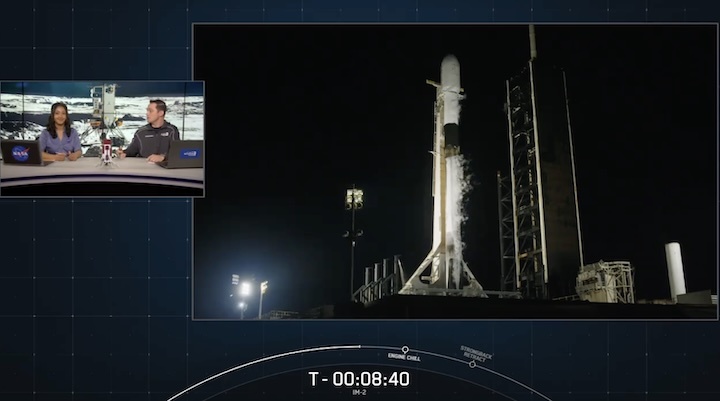
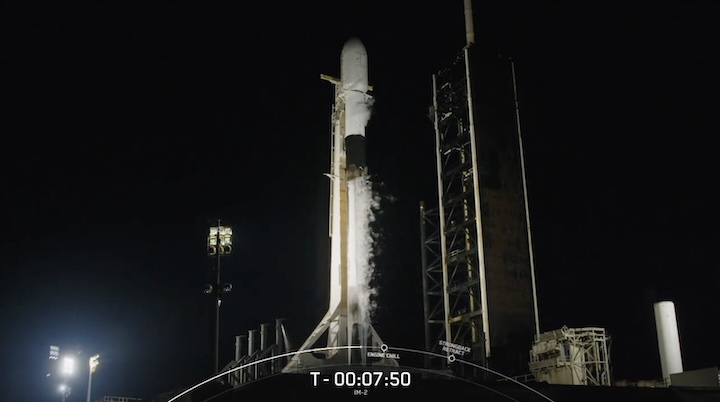
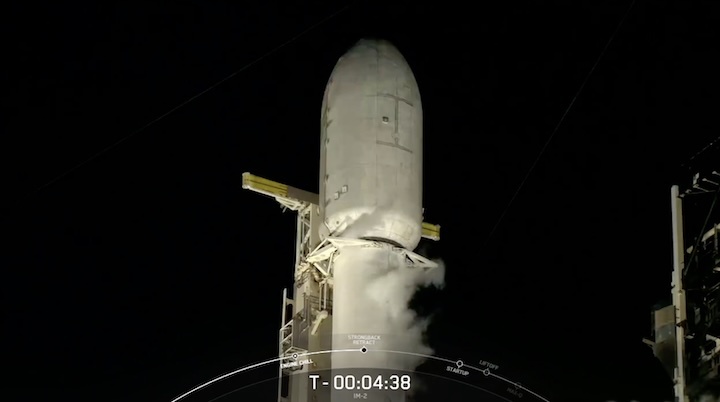
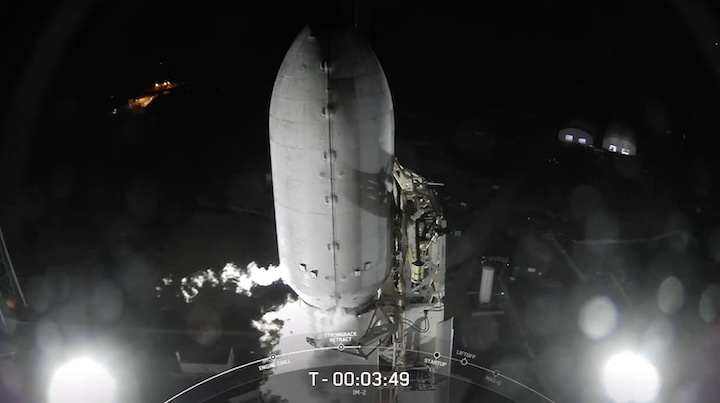
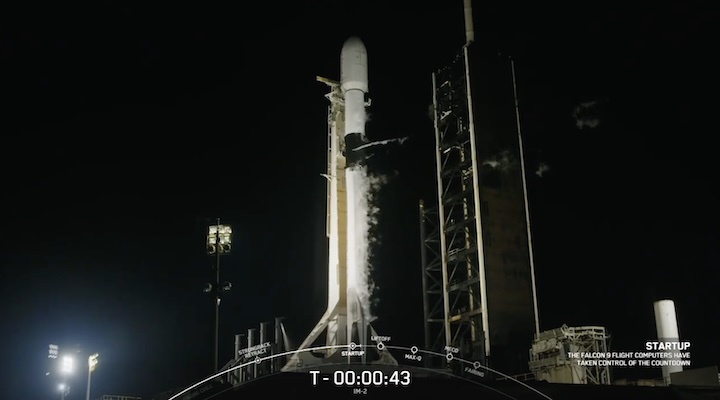
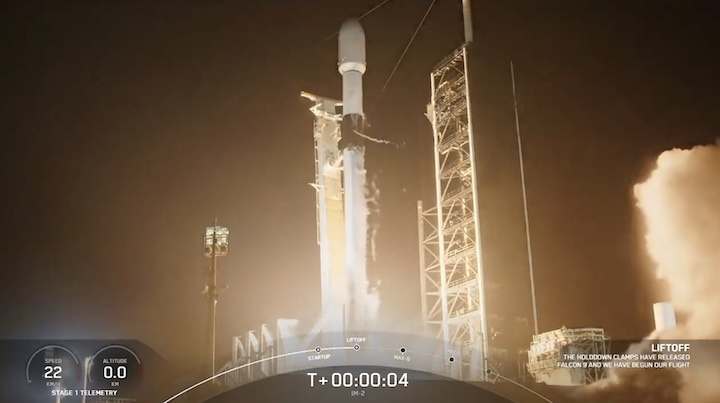
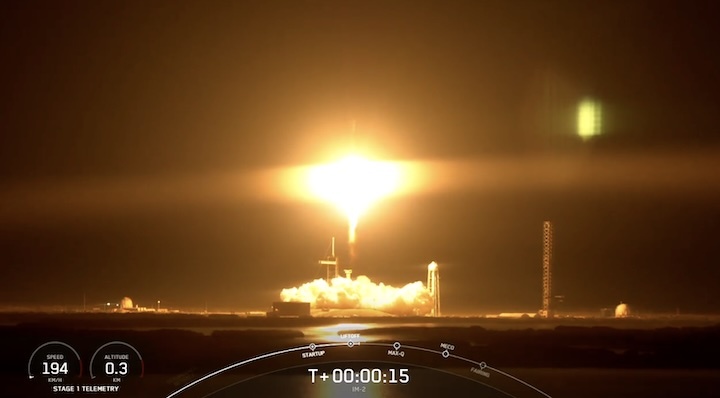
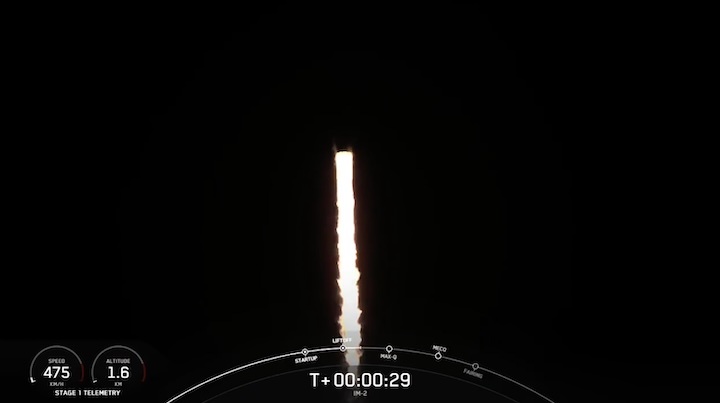
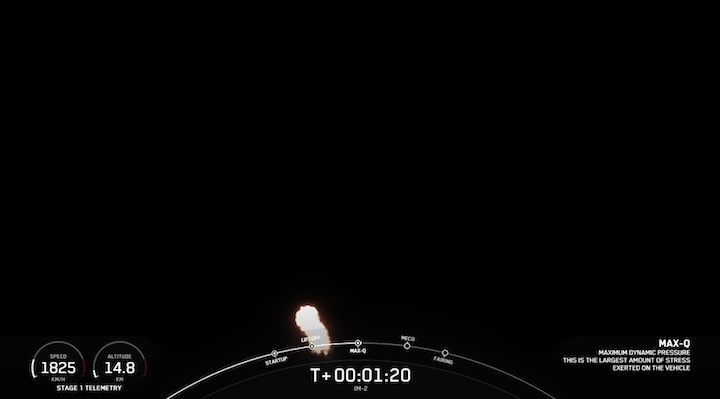
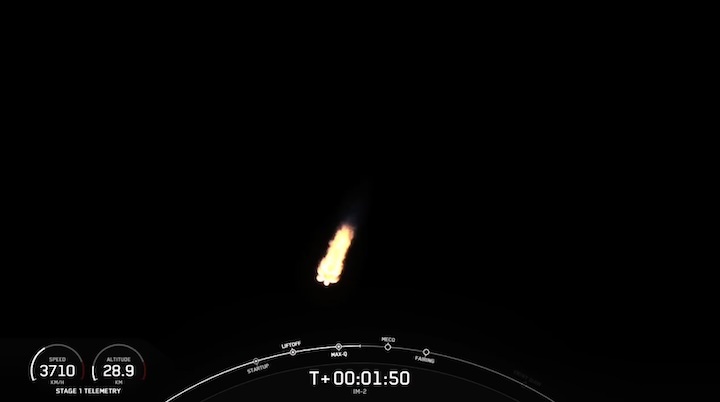
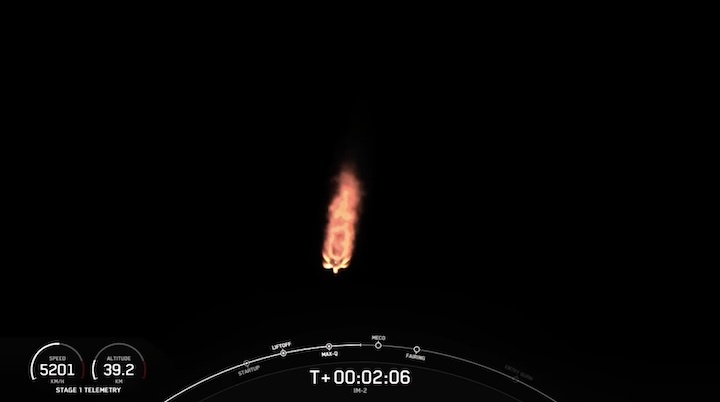
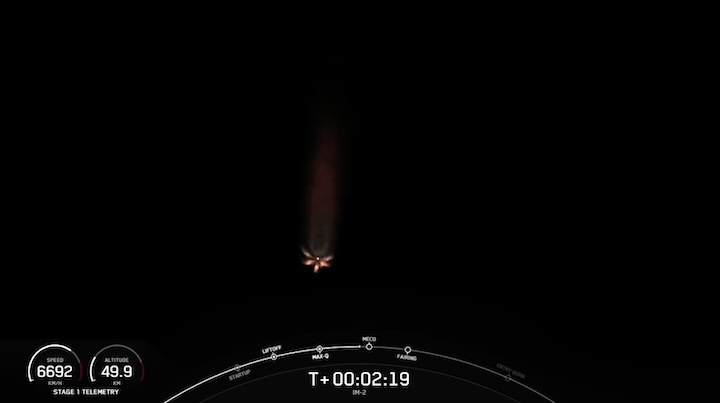

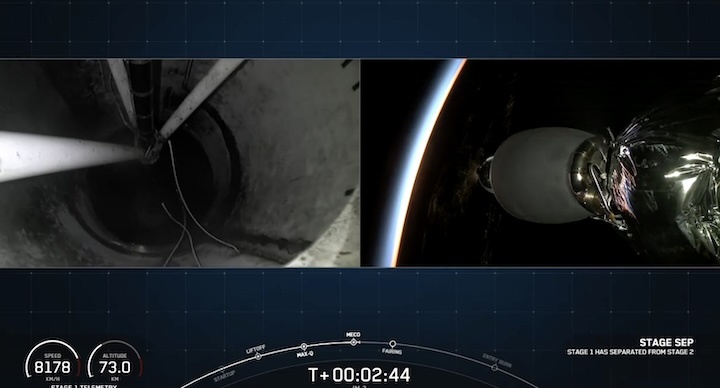
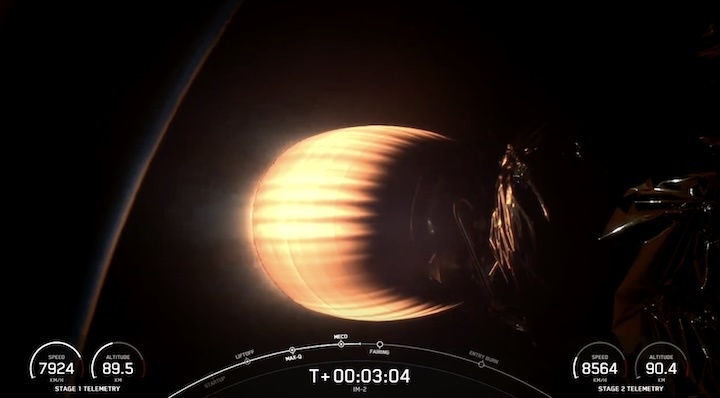
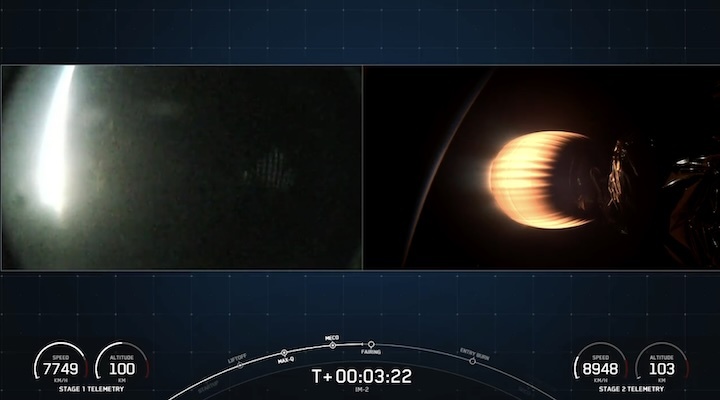
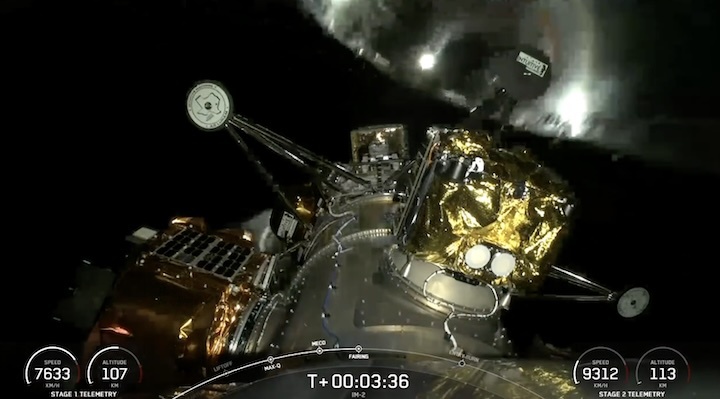


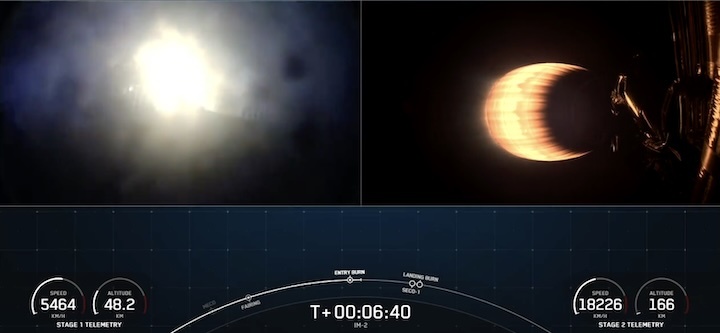
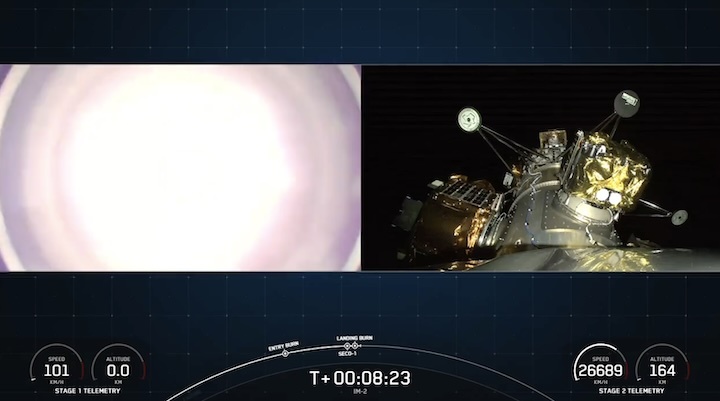
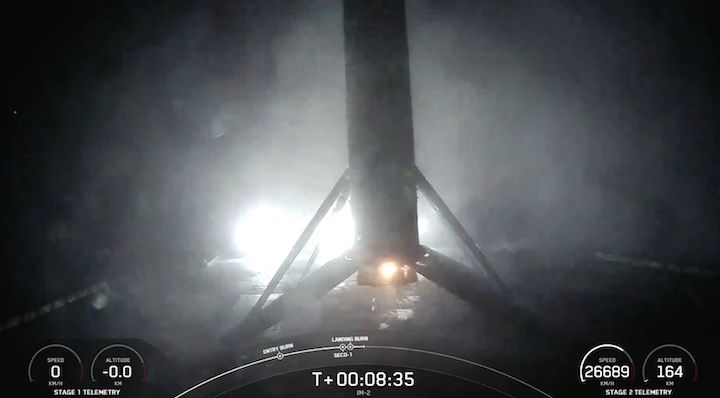
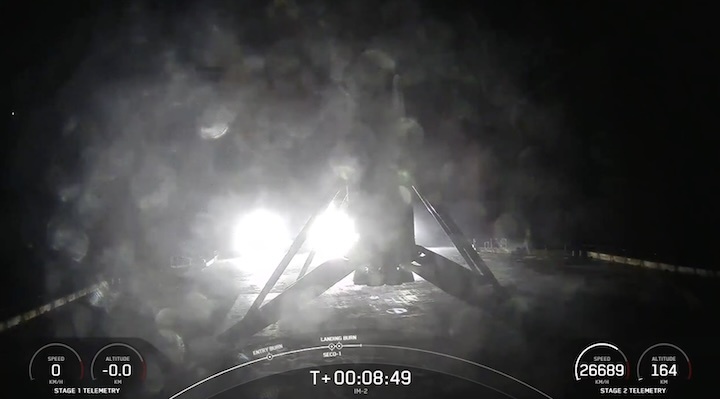
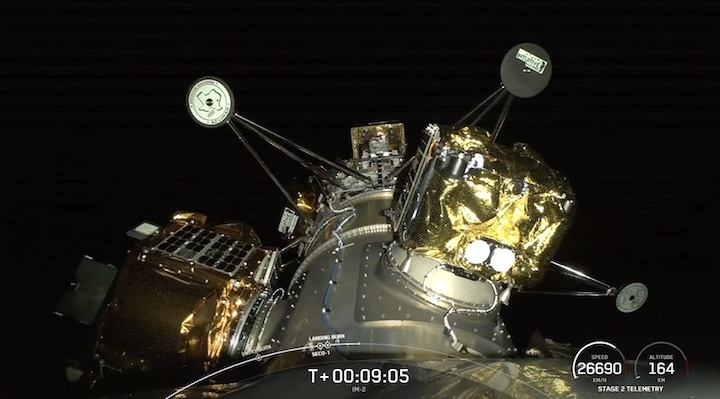
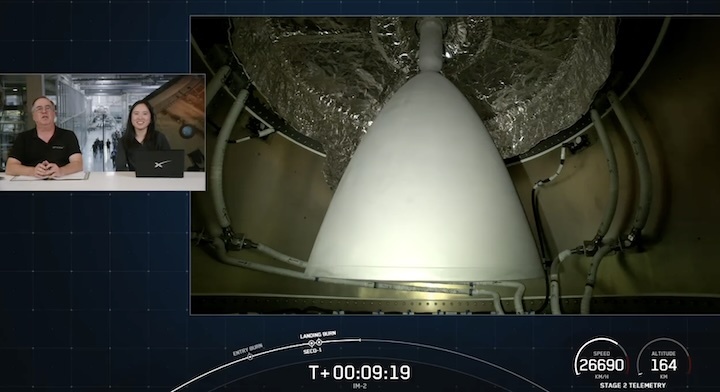
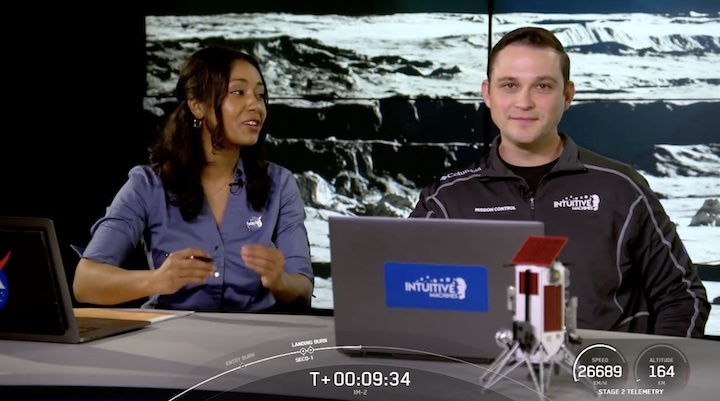
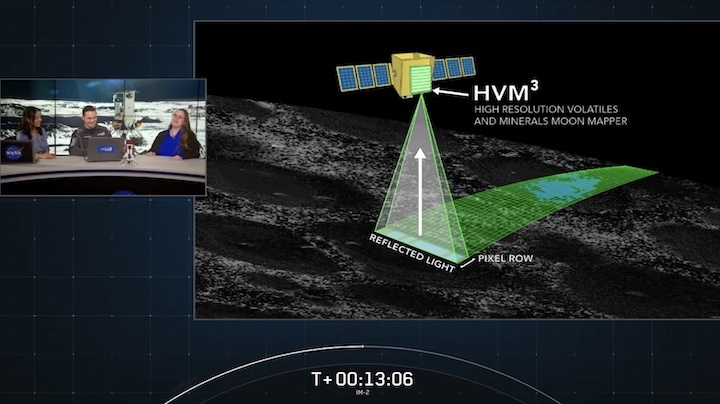

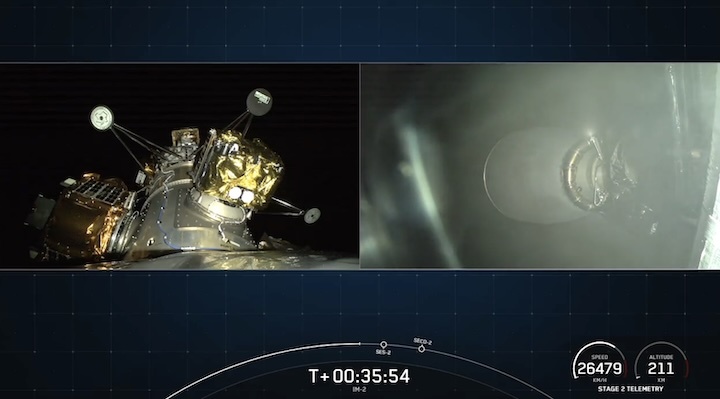
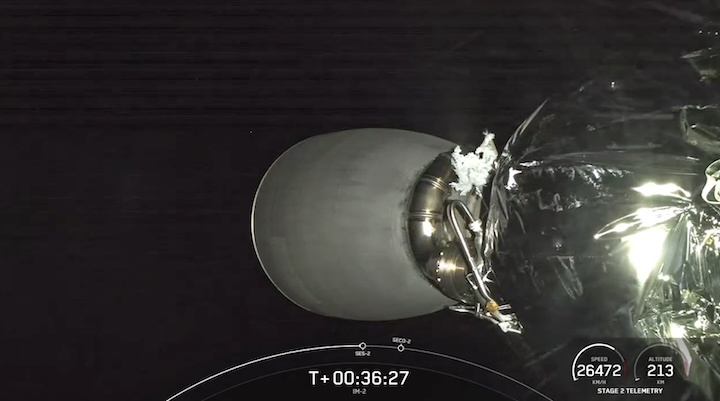

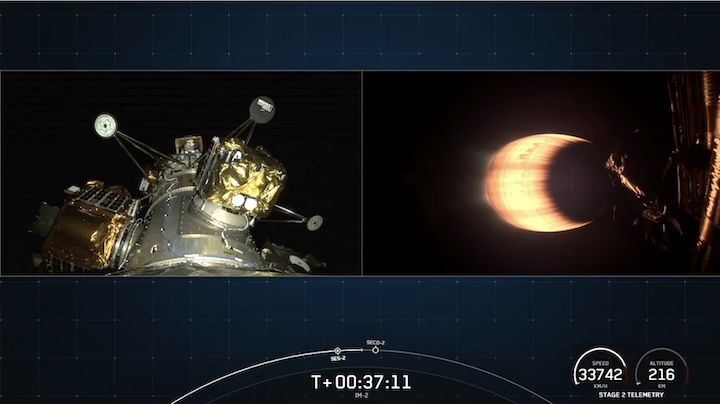
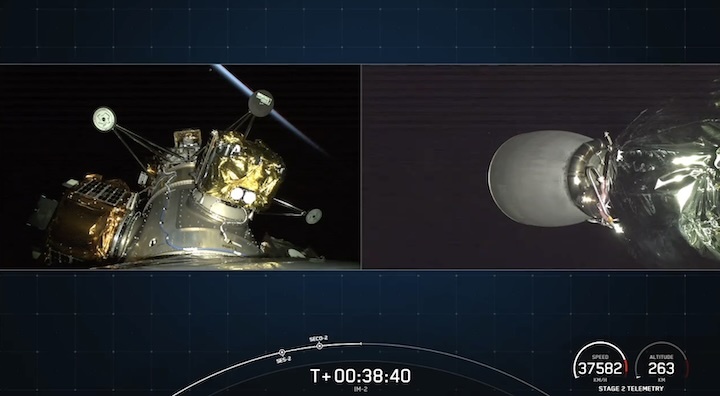
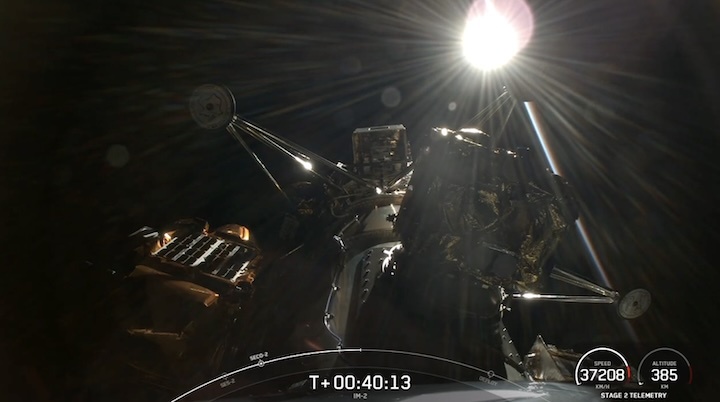
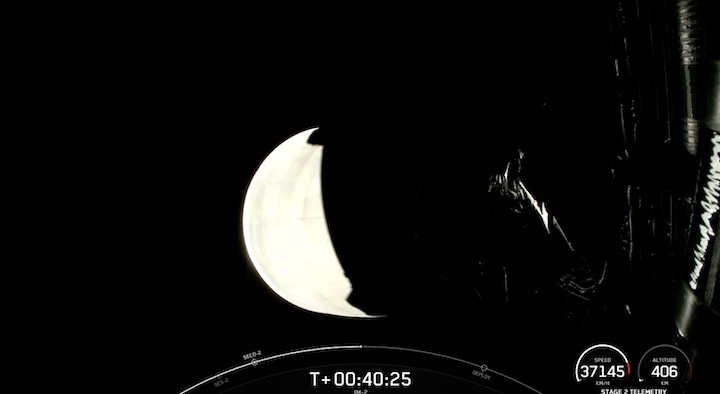
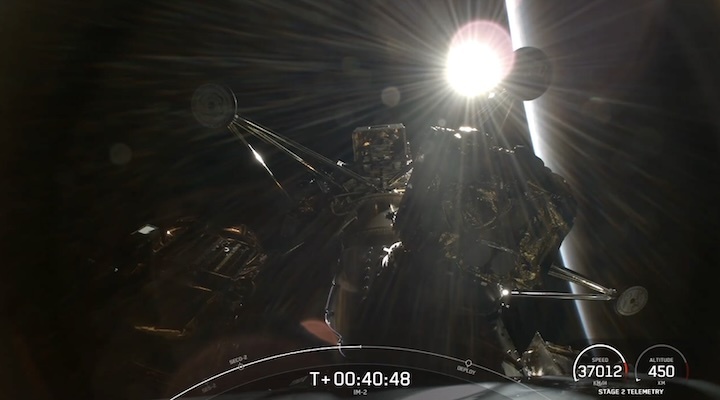
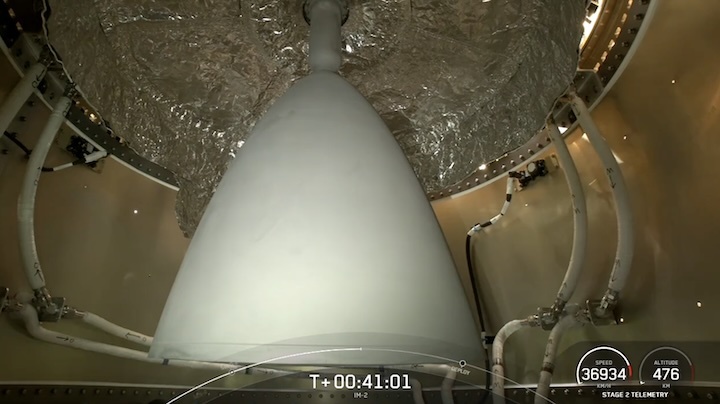

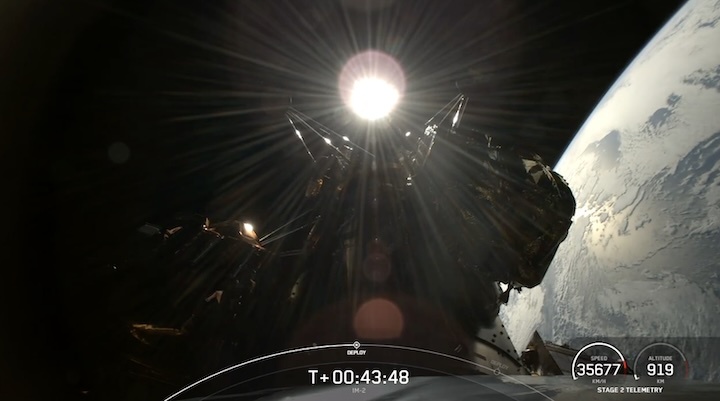
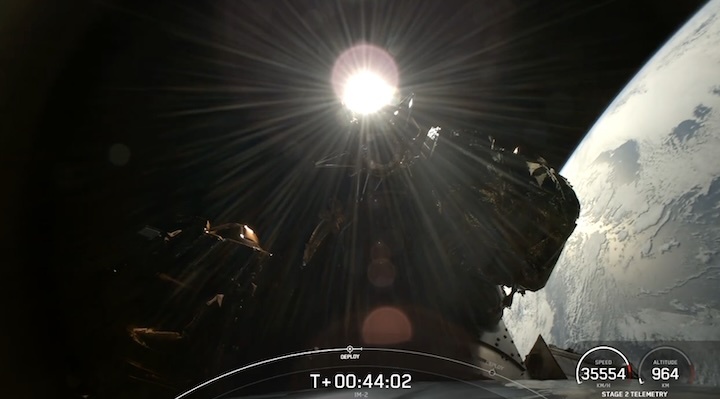
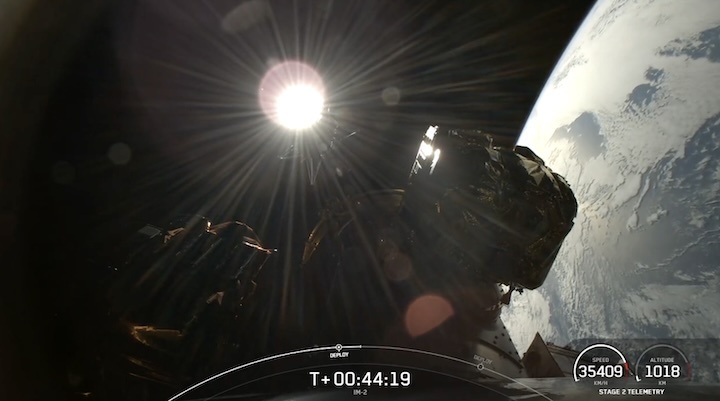
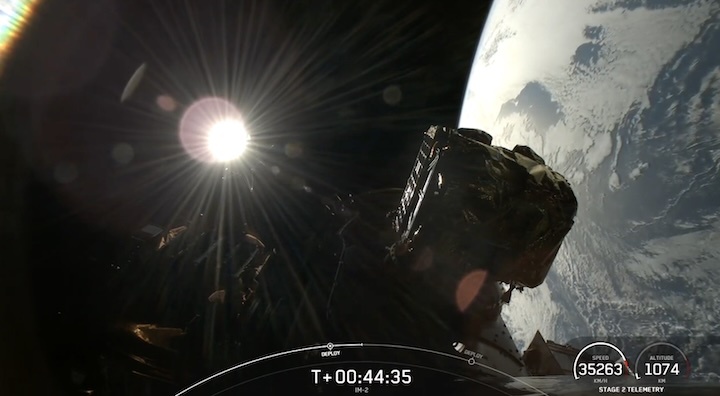
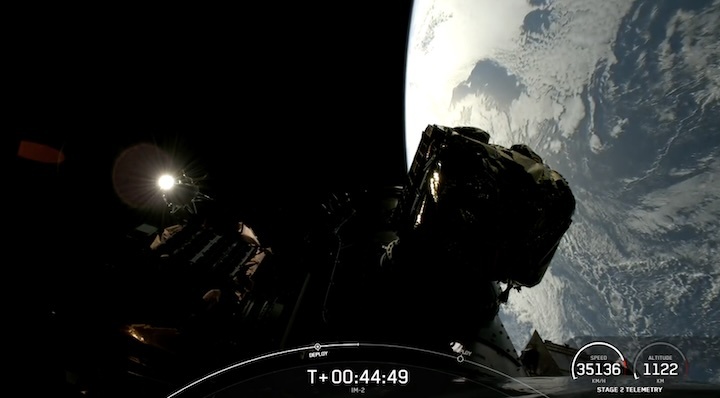
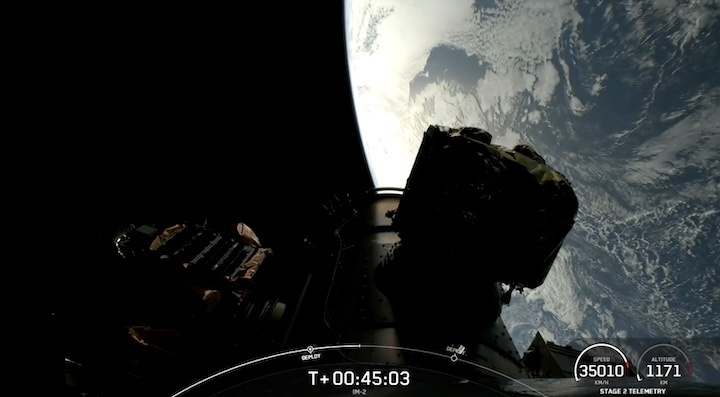
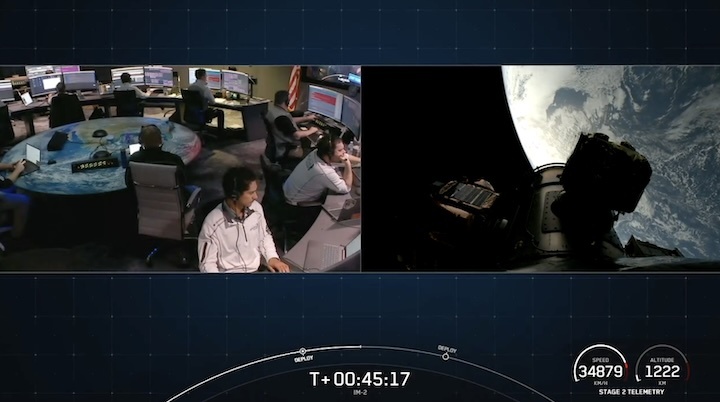
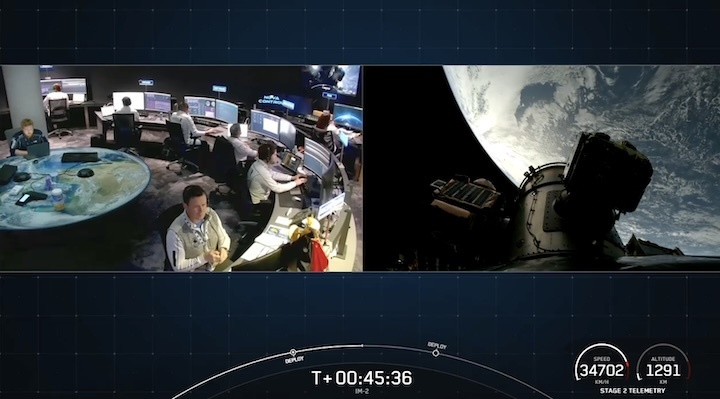
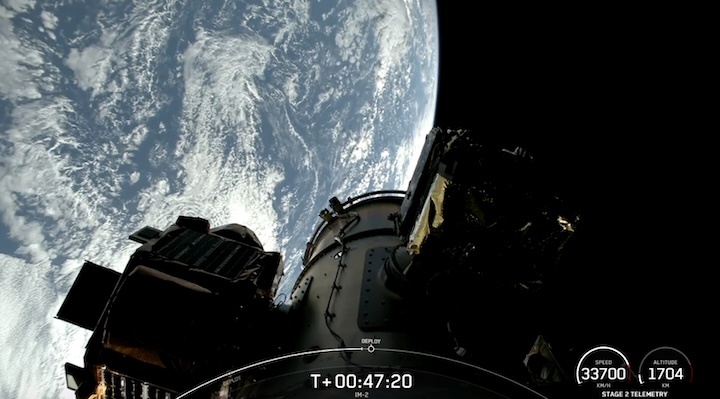
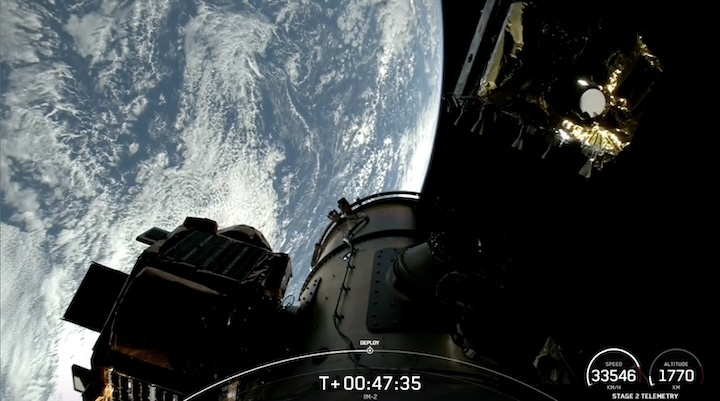
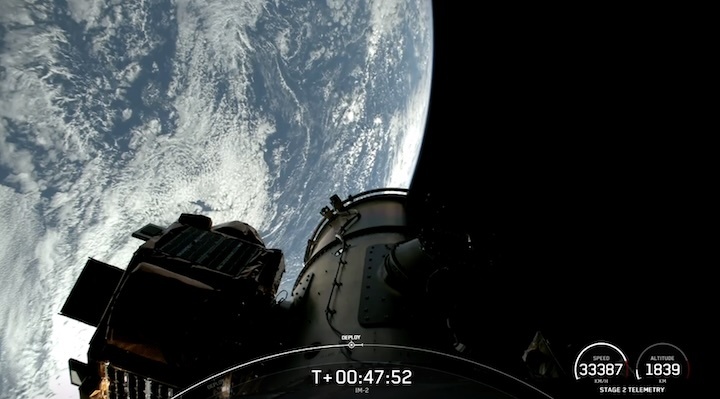
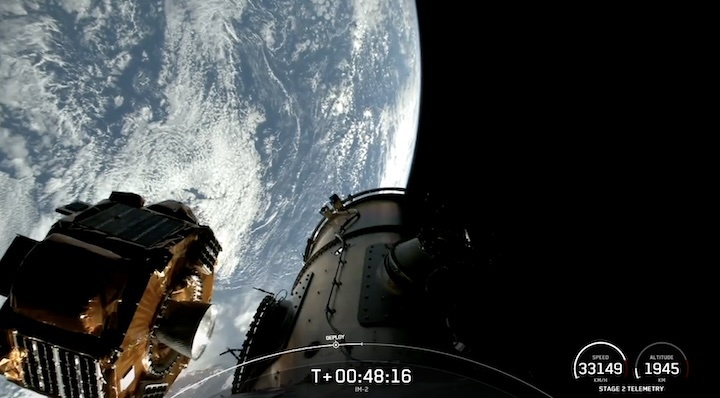
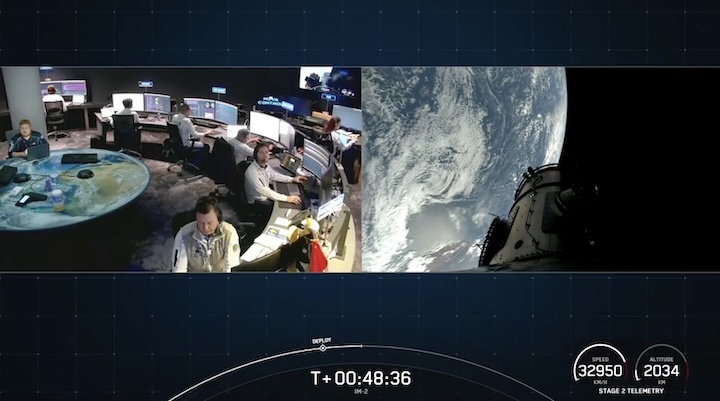
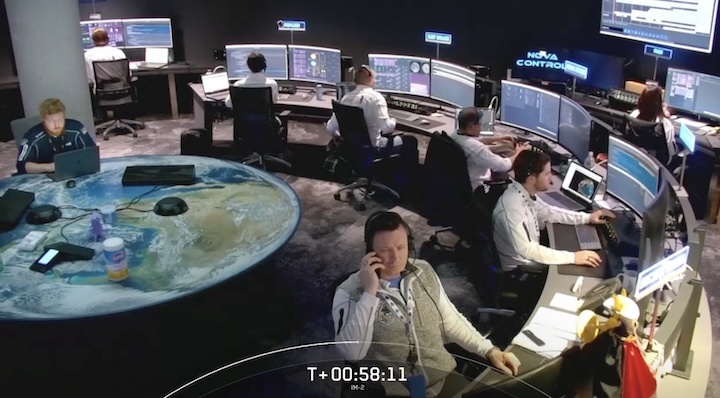
Quelle: SpaceX
